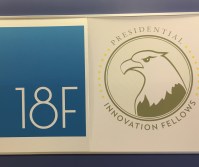18F’s Hub pushes tech adoption, transparency

Openness is a key ingredient powering the General Services Administration’s 18F initiative. And while the digital services team has opened up more of its inner workings to the public through a new tool called the Hub launched Tuesday, transparency was admittedly a secondary motivation.
Mike Bland, a former Google software programmer now with 18F, hopes the new Jekyll-based documentation platform will motivate cultural change. Because the Hub is based in Jekyll, “which is very lightweight, generates static HTML, you don’t need a database or any content management system like that,” Bland told FedScoop, “with just a handful of commands in a minute, you’ve got your own instance of it.”
But he doesn’t expect other programmers to pull the exact code from 18F’s GitHub and run with, but rather “hopefully they’ll get a tangible feel for the idea and get hooked on it,” he said. “And once they start building those networks within their own projects and teams and remember they got it from 18F, hopefully we can keep a connection going, and a lot of the things we’re trying to do and advocate for will spread through those channels.”
Bland recently held a seminar at GSA on ” Large Scale Development Culture Change,” based on his time at Google and concepts laid out in “Crossing the Chasm,” a book by Geoffrey A. Moore that traces the marketing of new technology adoption. With the Hub, Bland is targeting change instigators, the ” innovators and early adopters” Moore wrote about — those who drive the adoption of that new technology.
Bland is open to where the Hub’s influence could spread, whether with the American public or with other agencies looking to stand up similar digital services production floors. Though, of course, the latter goes more organically with 18F’s mission.
“We hope that these tools and artifacts will act as force-multipliers for our mission of changing federal IT development culture, and serve as key infrastructure for standing up digital services teams in other federal agencies,” he wrote in an announcement about the Hub. “Despite still being in its very early stages, we hope making the Hub available now will plant the seeds of culture change farther and wider than would otherwise be possible.”
So what exactly is the Hub?
“Basically its a place where I wanted to consolidate a bunch of our internal information and then also look for opportunities to maybe make public what we could, not so much so people could literally keep tabs on what we’re doing, but to expose the model of what we’re doing,” Bland said, showing FedScoop an early version of the tool in early December.
The Hub is first and foremost an internal communication and organization tool. But on the public side, it gives much insight into the inner working and build of 18F, and that’s where it aligns with the team’s transparency mission. The Hub also uses a system of ” Snippets,” which are short bulleted notes of what 18F members have been working on, a narrative of sorts, said 18F Director Greg Godbout.
“Code and metrics are great, the wonkiest people will enjoy those. But when you can get the Snippets, the narrative, also included on this, this becomes a new model for program offices who work for the American people report — in a transparent and open way,” Godbout said. “It’s not forcing it on people, but its basically saying ‘this information, let’s just get it out.’ The American people care, that’s why they want to see it. And maybe people would get a little less frustrated if they knew this team was working last week and knew they were being fiscally responsible, because they’re starting to include their financial contract information. So you’re seeing the beginning of that.”
The public tool will be a bit leaner than the private, internal site, Bland said, but it should still give the American people a better look into 18F. For instance, Bland’s Snippets from last week show that he was working on the soft launch of the Hub and a blog post explaining Snippets.
While the transparency element is crucial to the Hub and 18F, Bland drove home that more important is sharing this technology with others and seeing where they run with it.
“The beginning of what we have to do is get this idea in like a working first draft into the hands of the instigators, and then they’ll figure out in their environment how they make it work,” he said. “And then once we spread the seeds amongst all these instigators, then eventually we’ll have a real nice foundation through which all of these practices will hopefully spread.”






